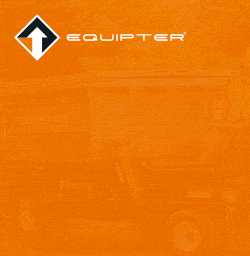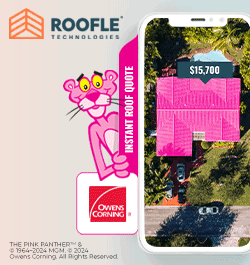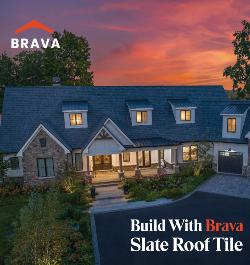A deep dive into this self-adhered roofing system

By Polyglass.
Understand what self-adhered roofing is, what benefits it provides, in addition to installation tips and best practices with this guide.
Say goodbye to time-consuming torching methods with self-adhered roofing systems featuring a factory-applied adhesive layer for quick installation.
Before we dive into a step-by-step guide on installing Polyglass’s ADESO® self-adhered roofing system, let's start with a quick overview of self-adhered technology and understand the advantages of using this type of system.
What is self-adhered roofing?
Self-adhered modified bitumen membranes and self-adhered underlayments are both roof components that can be installed quickly and easily thanks to self-adhered technology. What’s the difference between modified bitumen membranes and underlayments?
- Made using a combination of asphalt and polymers, modified bitumen membranes are extremely efficient at keeping buildings watertight and protected from the elements. These membranes create durable weather-proof layers that can even help facilities save on their energy bills.
- Underlayments are applied when constructing roofs to provide a protective waterproofing layer underneath the roof’s shingles, tiles or metal roof panels. Most underlayments are crafted from rubberized asphalt or synthetic components.
At Polyglass, our self-adhered modified bitumen membranes and underlayments use an innovative technology called ADESO
- ADESO self-adhered modified bitumen membranes combine a true APP or SBS formulation on the top weathering side with an aggressive self-adhered formulation on the bottom side of the reinforcement.
- ADESO self-adhered underlayments combine an aggressive self-adhering bottom layer coupled with one of several types of top surfaces, depending on the application and waterproofing needs.
Let’s dive a bit deeper into four major benefits of ADESO self-adhered technology.
1 - They save time and labor
Due to their innovative design, ADESO self-adhered membranes are incredibly quick, easy and cost-efficient to install without the need for torches or extra adhesive. They also offer a granule-free application — not having to deal with granules can save a lot of time and fuss during the installation process.
2 - They are safer to install
ADESO membranes do not require torching. This reduces the amount of potentially harmful fumes and accidents, which helps keep your installers and customers safe.
3 - They are incredibly effective
Polyglass’ ADESO self-adhered membranes create a durable, watertight long-lasting layer. They also come with an outstanding warranty, giving both you and your customers peace of mind.
4 - They are durable and versatile for any job
ADESO self-adhered membranes can be specifically tailored to withstand several weather conditions and roofing environments. For example, our specialized Polystick IR-XE is designed for optimum ice and water protection. With our extensive range of options, you’ll be able to find an ADESO membrane that’s perfect for your next client job.
How to install ADESO self-adhered membranes
Tools required:
- 3 to 4” wide hand roller
- 80 pound linoleum roller
- Roofers knife with a hooked blade
- Gloves and soft-soled shoes
- Broom
Prepare the roof
Before installing ADESO self-adhered membranes, use a broom to ensure that the roof surface is clean and free of dust. Installing ADESO self-adhered membranes requires an ambient temperature of at least 40 degrees Fahrenheit, with no standing water. Do not install in periods of inclement weather.
When cleaning the roof, you should also take the opportunity to remove any existing roof materials or obsolete penetrations that aren’t suitable for ADESO membranes. You should also repair any cracks, holes or other imperfections on the roof substrate.
ADESO self-adhered membranes can be installed on the following substrates; primed concrete, primed plywood with all joints sealed with bond breaker tape, roof boarding including gypsum-fiber roof boarding or a Polyglass Elastobase base sheet.
Installing the membranes
-
Allow the membranes to acclimatize in the sun for at least 15 minutes, then cut the membrane into workable lengths with the roofing knife.
-
Lay the strips of membrane flat, and be sure to align them at the lowest edge of the roof.
-
Once this first self-adhered base sheet is in place, fold each strip in half and remove the film. Pull the film at a 90-degree angle using a constant motion. Place half of the strip onto the roof and repeat the film removal on the other half.
-
With both sides of the film removed on each strip, you can lay the next self-adhered base sheet in place. Make sure to overlap the new sheets over the seams of the initial layer by a minimum of six inches all along the selvage edge.
-
Press the membranes down with firm and even pressure and cut a 45-degree angle into the top corner of the sheet.
-
Remove the protective film from the seal lap and press the next membrane onto the seam. Use your hand roller along all of the seal laps and seams to make sure the layer has fully adhered.
-
Once the sheet has been installed, use your 80 pound linoleum roller to ensure that the layer has fully adhered.
Installing cap sheets
-
Allow cap sheet 15 minutes to acclimatize in the sun, then cut into manageable strips.
-
Install the strips, with the selvage edges away from the eaves edges. Align the cap sheet with the edge of the eaves at the lowest point on the roof.
-
Fold the sheet in half and remove the film using a constant motion at a 90-degree angle. Once both sides of film are removed, install the next sheet. Make sure that the new sheet has at least a six-inch overlap over the previous sheet.
-
At the end of the cap sheet roll, remove the release film and press each sheet down firmly and evenly. Run your hand roller over all edges and seams to make sure they have fully adhered.
-
Using your linoleum roller, start in the center of the cap sheet and work outward to remove trapped air.
-
For the next sheet, completely overlap the selvage edge of the first sheet. When releasing the film on the selvage edges, only peel enough away on the previous roll to complete each section.
-
Once all sheets are installed, run your linoleum roller over the cap sheets to ensure full adhesion.
There you have it — that is the basic process of installing ADESO self-adhered membranes and cap sheets. If installing metal edging or covering a roof with transitions to steep-sloped areas, see the video above for more information.
Learn more about how ADESO self-adhered membranes can make your next job smoother and easier.
Original article source: Polyglass






















Comments
Leave a Reply
Have an account? Login to leave a comment!
Sign In